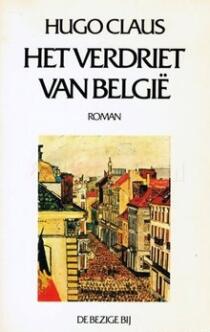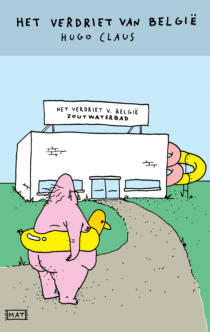The novel is also “classic” in its clear structure and in the subtle reference it makes to literature from antiquity, both in its theme and form.
The theme is introduced using a motto from the Epistulae of Pliny the Younger, about the eruption of Mount Vesuvius: a darkness that abruptly falls and still leaves its mark years later in the form of a cloud of ash. These traces gradually become clearer in the course of the story, which is told in five episodes, like the five acts in a Greek tragedy.
The chapters are preceded by a prologue in which we learn about the place where the events take place and meet the protagonist, Anton Steenwijk. The chronological story then begins during the famine of 1945, near the end of the Second World War. Fake Ploeg, a member of the Dutch Nazi party, is shot dead and then moved by the neighbours to the front of twelve-year-old Anton’s house in Haarlem. In retaliation, the Nazis burn down his house and his parents and older brother are killed. Anton is taken away and after being interrogated, is taken to his aunt and uncle in Amsterdam.
Questions surrounding the “assault”, both in terms of what actually occurred and the social and moral implications, are gradually answered in the subsequent episodes, despite Anton’s passivity. These episodes are organised around incidents and wider political acts: a visit to the place where his childhood home had once stood (1952); the Russian (communist) invasion of Hungary (1956); the funeral of a family friend, the Provo movement and the Vietnam war (1966) and finally, a peace march against atomic weapons (1981).
Chance encounters allow Anton (and the reader with him) to piece together a better picture of the 1945 assault. Yet Anton remains the detached observer of events. He wants to forget, but he cannot. As a result, the reader is no longer focused on the emotional experience but instead on the socio-political and ethical themes of the story: the sensitive and insoluble issues of guilt, innocence and responsibility.
Fortunately, the philosophical layers of the story are clarified by engaging minor characters that serve to personify the issue of guilt. This literary device – along with the political tensions of war, resistance and collaboration, as well as the film version by Fons Rademakers - probably explains the great and lasting success of the novel.
Firstly, there is Truus Coster, who was inspired by the resistance heroine Hannie Schaft. Truus leaves a deep impression on the twelve-year-old Anton, an impression that he cannot shake. Then there is Truus’ comrade and friend Cor Takes, resistance member and co-conspirator of Ploeg’s murder. There is also an old school friend, Fake Ploeg Junior, whose humiliation shows the other side of the question of guilt. Finally, there is Anton’s former neighbour girl, Karin Korteweg, who would also like to get over her “guilt” (the moving of Ploeg’s body to the front of the Steenwijk’s house).
But you cannot get rid of guilt, it would seem. The story thus ends, once more in reference to the motto, with clouds of ash being raised.






